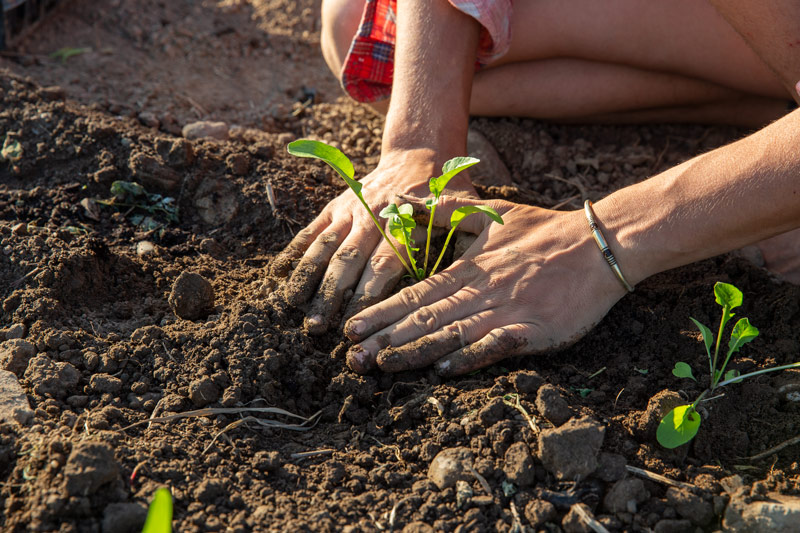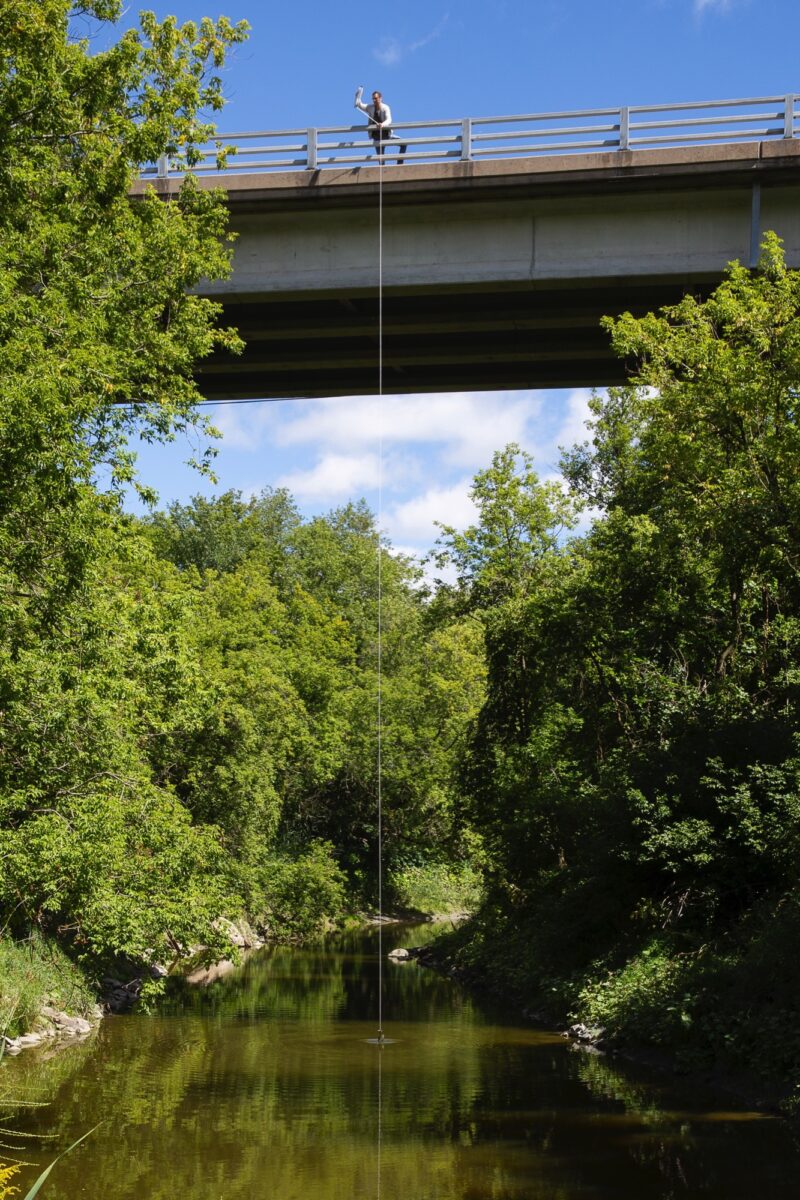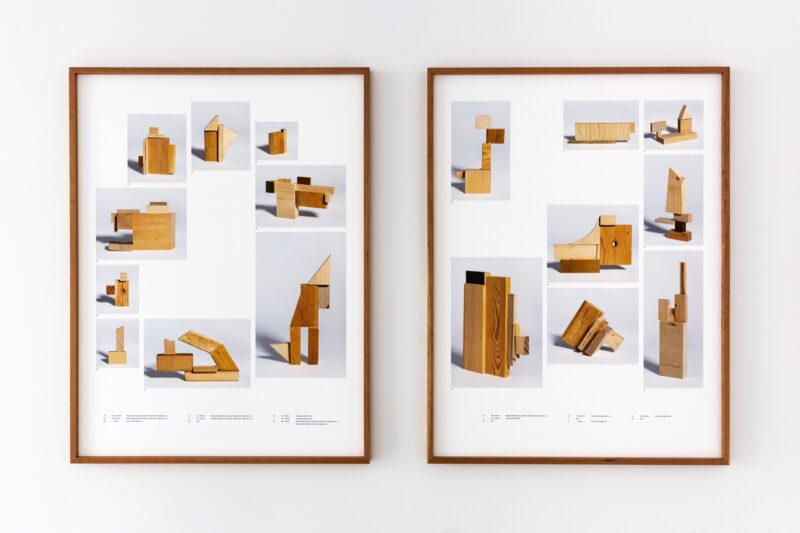[Summer 2021]
Richard Ibghy & Marilou Lemmens
Querelle entre deux puces pour savoir à qui appartient le chien sur lequel elles vivent
Par Noémie Fortin
Fondation Grantham pour l’art et l’environnement, Saint-Edmond-de-Grantham
27.09.2020 — 26.06.2021
Presented at the Grantham Foundation for the Arts and the Environment, the exhibition Querelle entre deux puces pour savoir à qui appartient le chien sur lequel elles vivent presents works produced by Richard Ibghy and Marilou Lemmens during a research residency in the summer of 2020. Preoccupied with bringing ideas into the visual realm, Ibghy and Lemmens are pursuing their collaborative practice with a series of works intended to materialize abstract notions regarding land ownership and territory. The corpus was developed through research, meetings, and discussions with scientists and farmers. With a combination of videos, installations, and photographs, the exhibition offers a sensitive, well-informed portrait of the use, contamination, and appropriation of land in rural areas.
The exhibition opens with the video Herber, désherber, presented on a screen placed on the floor. We see the hands and bare feet of a farmer kneeling to plant seeds and weed the beds. Her movements are repeated at a constant pace, following the cadence of manual labour inherent to the principles of organic agriculture. This juxtaposition of complementary but opposed actions – planting some seedlings and pulling out others – exposes the complexity of the actions needed to maintain human life and underlines the violence and care involved in using the soil for the purpose of nutrition. The video Things that grow by themselves / Things that we help grow (2014) is presented in the adjoining gallery. We see Lemmens gathering different forms of vegetation: she shows each part of the plant she has chosen to the camera and then throws it away. The different components of the plant specimens pulled from their living environment are isolated in order to distinguish their functions and to project potential uses for them. By extracting these living organisms from the ground in order to inventory them, Ibghy and Lemmens create a parallel with the detached and analytic gaze that leads to scientific knowledge.
Placed in front of a window, the sculpture L’affaire Louis Robert is based on the results of a study about the impact of neonicotinoid pesticides on corn production. Ibghy and Lemmens materialize the comparative data through paired blocks of wood – one piece in each pair stained in a colour and the other with a natural finish – aligned in a transparent showcase. The work thus reflects the position of the agronomist and alarm sounder Louis Robert, who found himself at the centre of a controversy surrounding the censorship of this study.
In a small room in the Foundation’s basement, the installation L’inhospitalité de douze rivières examines levels of contamination due to pesticide concentrations in water. Its object of study is the criterion of chronic toxicity applied to a dozen rivers visited by Ibghy and Lemmens during their residency. On the wall, a video offers several sequences of a sampling bottle being put in the water: a close-up at the edge of Turtle River, a long shot at a bridge overlooking Yamachiche River, and a view beside a dam on the Black River. On the other side of the room, twelve bottles placed on a dais represent these rivers, each filled with water to a level corresponding to its own threshold of inhospitality.
Formed of more than three hundred small sculptures made of wood and coloured acetate, the installation La grande appropriation sits on a large table. The work represents the geometric parcelling of Quebec land during colonial times through the schematic reproduction of different townships and seigneuries.
By standing each of these pieces of land, usually portrayed flat, on the vertical, Ibghy and Lemmens underline the materiality of the territory, which has undergone a process of abstraction via territorialization mechanisms such as mapping and surveying. This strategy of rematerialization of land is also the subject of the series of digital prints titled Le nombre d’hectares de terre en zone agricole acquis par des spéculateurs dans 54 municipalités du Québec entre 2009 et 2014. The grouping of six photographic compositions features pictures of sculptures made of assemblages of recovered wood that represent a total of 2,701 hectares of arable land. As the sculptures themselves are not in the exhibition, a second cycle of abstraction through photography instead renders them in two dimensions. This omission reflects the appropriation and financialization of these lands, acquired by investors who wagered on their profitability by running roughshod over their material reality.
Ultimately, through a series of works vacillating between materialization of data and abstraction of the material, Ibghy and Lemmens use their exhibition at the Grantham Foundation to ask relevant questions about different ways of inhabiting places and treating the soil, explored in a rural and agricultural reality. The pieces that they have brought together offer different gateways to the issues of ownership and exclusion anchored in these territories and seek to transmit the complexity of these problems in order to provoke both an emotional reaction and a critical reflection. Translated by Käthe Roth
A master’s student in art history at Concordia University and an independent curator based in the Eastern Townships, Noémie Fortin is the curator of education at the Foreman Art Gallery of Bishop’s University. Her focus of research is art practices and institutional models turned to ecological art and based in rural settings. She has contributed articles to Vie des Arts and Inter, art actuel, among others.
[ See the magazine for the complete article and more images : Ciel variable 117 – SHIFTED ]



